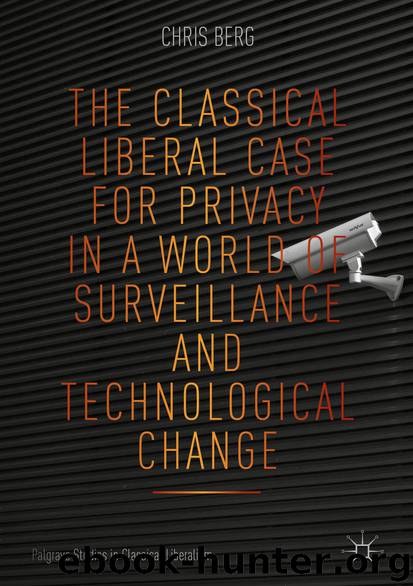The Classical Liberal Case for Privacy in a World of Surveillance and Technological Change by Chris Berg

Author:Chris Berg
Language: eng
Format: epub
ISBN: 9783319965833
Publisher: Springer International Publishing
The historian Katerina Gerasimova has described communal apartment living as “public privacy”: the experience of living the most intimate parts of one’s personal life under the watch of others.33 The communal apartments were set up almost perfectly for social surveillance. The policing and intrusion of ones’ lives by neighbours was a key part of the Bolshevik state’s system of population monitoring. “Eavesdropping, spying and informing were all rampant in the communal apartment of the 1930s, when people were encouraged to be vigilant,” writes Figes.34 Inhabitants never knew whether those they shared living spaces with were state informers. Living together gave inhabitants a more detailed and comprehensive picture of their neighbours lives than any external sate monitoring would be able to achieve. Neighbours could see who met who, how much money their co-inhabitants had, their use of the telephone, and the strengths and weaknesses of their intra-family relationships.
Living on top of immediate and extended family in uncomfortably close quarters with dozens of other families had a deep psychological impact. At their best the communal apartment fostered a sense of collectivity among the inhabitants. But the ideological goals of sharing household tasks often turned the communal apartment into a miniature state—ruled semi-democratically or dictatorially—and often fostered deep interpersonal conflicts. The absence of private space was particularly felt. Families tried to divide their single rooms into zones of privacy by putting up curtains or segmenting the space with furniture. As Figes’ interviews show, having to share bathrooms and toilets (and to a lesser extent kitchens) was felt as a particular loss of autonomy. Private intimacy—such as that between a husband and wife—could almost never be enjoyed: sexual activity had to be done silently in a space where the extended family might be sleeping.
After the death of Stalin the Khrushchev regime began a mass housing campaign that sought to move families out of communal apartments and into single family dwellings . While its success was only partial—16 per cent of households in St Petersburg still lived in communal households in 1998—for those who did acquire a private apartment, this represented for them a reconstruction of the boundaries of the public and private domains, and the reestablishment of control over private space and time to the exclusion of the state. Perhaps paradoxically, the effect was to make the defence of personal privacy a state issue. As Steven E. Harris finds, clearer boundaries between the public domain and the private domain meant that the state was increasingly asked to adjudicate disputes between neighbours. The new apartments were not always well constructed and in the 1950s and 1960s the socialist state launched a “war on noise” to reduce noise in the workplace and home.35 While this campaign may have met with limited success, the reprivatization of home life after the death of Stalin has been described as one of the crucial factors in the long-term erosion of the socialist order.36
The elimination of the public-private divide and incursion of the state into private life is a common feature of revolutionary regimes.
Download
This site does not store any files on its server. We only index and link to content provided by other sites. Please contact the content providers to delete copyright contents if any and email us, we'll remove relevant links or contents immediately.
International Integration of the Brazilian Economy by Elias C. Grivoyannis(74565)
The Radium Girls by Kate Moore(11616)
Turbulence by E. J. Noyes(7696)
Nudge - Improving Decisions about Health, Wealth, and Happiness by Thaler Sunstein(7238)
The Black Swan by Nassim Nicholas Taleb(6761)
Rich Dad Poor Dad by Robert T. Kiyosaki(6174)
Pioneering Portfolio Management by David F. Swensen(6078)
Man-made Catastrophes and Risk Information Concealment by Dmitry Chernov & Didier Sornette(5644)
Zero to One by Peter Thiel(5487)
Secrecy World by Jake Bernstein(4387)
Millionaire: The Philanderer, Gambler, and Duelist Who Invented Modern Finance by Janet Gleeson(4089)
The Age of Surveillance Capitalism by Shoshana Zuboff(3981)
Skin in the Game by Nassim Nicholas Taleb(3965)
The Money Culture by Michael Lewis(3843)
Bullshit Jobs by David Graeber(3826)
Skin in the Game: Hidden Asymmetries in Daily Life by Nassim Nicholas Taleb(3720)
The Dhandho Investor by Mohnish Pabrai(3560)
The Wisdom of Finance by Mihir Desai(3523)
Blockchain Basics by Daniel Drescher(3327)
